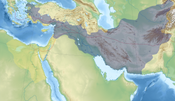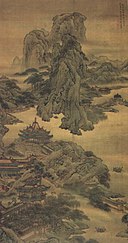List of ancient great powers
[16] Shalmaneser III (858–823 BC) attacked and reduced Babylonia to vassalage, and defeated Aramea, Israel, Urartu, Phoenicia and the Neo-Hittite states, forcing all of these to pay tribute to Assyria.
Under Ashurbanipal (669–627 BC) its domination spanned from the Caucasus Mountains in the north to Nubia, Egypt and Arabia in the south, and from Cyprus and Antioch in the west to Persia in the east.
[18] Ashurbanipal destroyed Elam and smashed a rebellion led by his own brother Shamash-shum-ukim who was the Assyrian king of Babylon, exacting savage revenge on the Chaldeans, Nabateans, Arabs and Elamites who had supported him.
Because of the importance of northern Syria to the vital routes linking the Cilician Gates with Mesopotamia, defense of this area was crucial, and was soon put to the test by Egyptian expansion under Pharaoh Rameses II.
[dubious – discuss] In its time it had political power over neighboring countries, and had high cultural and economic achievements during its lengthy rule over a vast region from its picturesque capital at Persepolis.
With the expansion of Arsacid power, the seat of central government shifted from Nisa, Turkmenistan to Ctesiphon along the Tigris (south of modern Baghdad, Iraq), although several other sites also served as capitals.
The combination of a fertile river valley, natural borders that made an invasion unfeasible, and a military able to rise to the challenge when needed, turned Egypt into a major power.
The high priests at the temple of Amun in Thebes accumulated vast tracts of land and wealth, and their growing power splintered the country during the Third Intermediate Period.
After a year of fighting the Egyptian Pharaoh, Nectanebo inflicted a crushing defeat on the Persians with the support of mercenaries led by the Greek generals Diophantus and Lamius.
A new-found respect for antiquities and excavations in the early modern period led to the scientific investigation of Egyptian civilization and a greater appreciation of its cultural legacy, for Egypt and the world.
The city states of Mossylon, Malao, Mundus and Tabae in Somalia engaged in a lucrative trade network connecting Somali merchants with Phoenicia, Ptolemaic Egypt, Greece, Parthian Persia, Saba, Nabataea and the Roman Empire.
During this period, aspects of Indian civilisation, administration, culture, and religion (Hinduism and Buddhism) spread to much of Asia, while kingdoms in Southern India had maritime business links with the Roman Empire from around 77 AD.
Historians theorize that the organization of the Empire was in line with the extensive bureaucracy described by Kautilya in the Arthashastra: a sophisticated civil service governed everything from municipal hygiene to international trade.
Having renounced offensive warfare and expansionism, Ashoka nevertheless continued to maintain this large army, to protect the Empire and instill stability and peace across South Asia.
This period is called the Golden Age of India and was marked by extensive achievements in science, technology, engineering, art, dialectic, literature, logic, mathematics, astronomy, religion and philosophy that crystallized the elements of what is generally known as Indian culture.
The empire extended its political and cultural influence over Korea, Japan, Mongolia, Vietnam, and Central Asia before it finally collapsed under a combination of domestic and external pressures.
These campaigns expanded Han sovereignty into the Tarim Basin of Central Asia and helped establish the vast trade network known as the Silk Road, which reached as far as the Mediterranean world.
Some of the most important figures of Western cultural and intellectual history lived in Athens during this period: the dramatists Aeschylus, Aristophanes, Euripides and Sophocles, the philosophers Aristotle, Plato and Socrates.Sparta was a Dorian Greek military state, originally centered in Laconia.
As a city-state devoted to military training, Sparta possessed the most formidable army in the Greek world, and after achieving notable victories over the Athenian and Persian Empires, regarded itself as the natural protector of Greece.
[36] In 480 BC a small Spartan unit under King Leonidas made a legendary last stand against a massive, invading Persian army at the Battle of Thermopylae.
The rise of Macedon, from a small kingdom at the periphery of Classical Greek affairs, to one which came to dominate the entire Hellenic world (and beyond), occurred in the space of just 25 years, between 359 and 336 BC.
The Paionians and the Thracians had sacked and invaded the eastern regions of the country, while the Athenians had landed, at Methoni on the coast, a contingent under a Macedonian pretender called Argeus.
Philip's son, Alexander the Great, managed to briefly extend Macedonian power not only over the central Greek city-states, but also to the Persian empire, including Egypt and lands as far east as the fringes of India.
Although the empire fractured into multiple Hellenic regimes shortly after his death, his conquests left a lasting legacy, not least in the new Greek-speaking cities founded across Persia's western territories, heralding the Hellenistic period.
Roman expansion began long before the state was transformed into a de facto monarchy and reached its zenith under emperor Trajan with the conquest of Mesopotamia and Armenia from 113 to 117.
Ancient Rome's influence upon the culture, law, technology, arts, language, religion, government, military, and architecture of Western civilization continues to this day even outside latin countries .
The Getae, a northern Thracian people[42][43][44] located between the northeastern foothills of the Haemus range and the lower Danube and the Black Sea, had been part of the Odrysian realm since Teres I, even though it is not clear how tightly they were actually incorporated into the state.
Initially only of limited relevance, its power grew significantly after the battle of Actium in 31 BC, when Emperor Augustus installed a new dynasty that proved to be highly loyal and expansive.
[83] At their greatest reported extent, around the 1st century AD, these tribes ranged from the Vistula River to the mouth of the Danube and eastward to the Volga, bordering the shores of the Black and Caspian seas as well as the Caucasus to the south.
[84] Their territory, which was known as Sarmatia to Greco-Roman ethnographers, corresponded to the western part of greater Scythia (mostly modern Ukraine and Southern Russia, also to a smaller extent north eastern Balkans around Moldova).

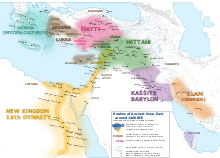
|
Egypt
Hatti Babylonia |
Assyria
Mitanni Mycenaean Greece |
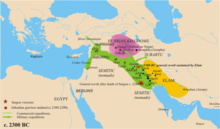
Akkad
Elam
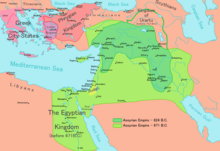
Neo-Assyrian Empire
Assyrian Empire - 824 BC
Assyrian Empire - 671 BC
Other
Judah
Phrygian Kingdom
Lydian Kingdom
Greek City States



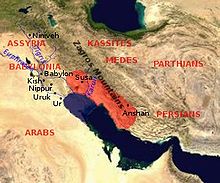
The approximate Bronze Age Elamite Empire extension of the Persian Gulf is shown.

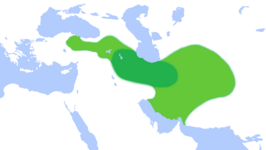

Outlying regions
Achaemenid imperial region
cities, battles, power centers

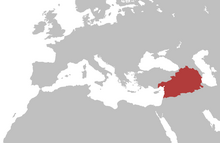
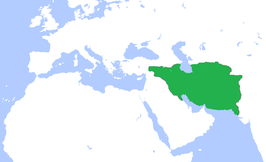
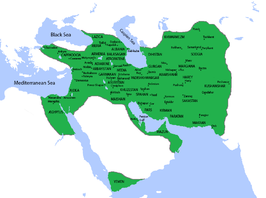



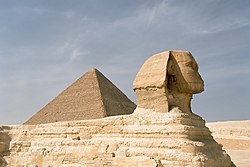


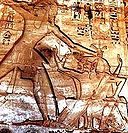




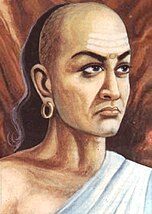

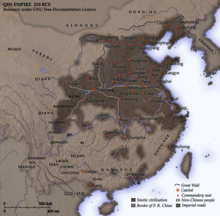
Qin region
Outlying regions
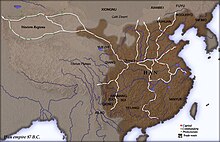
Han region
Outlying regions
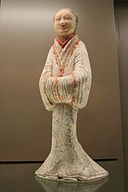
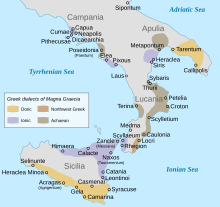










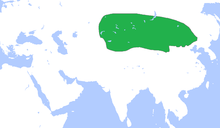
Xiongnu Region
Outlying regions
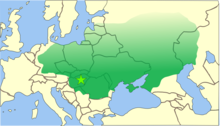
Attila's imperial capital (approximate)
Attila's empire (approximate)
Non-Hunnic Regions
